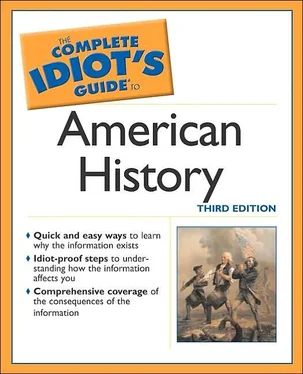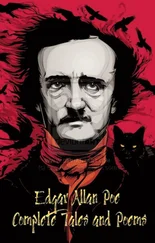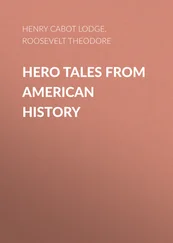Hard on the heels of the Italian conquest of Ethiopia came the Spanish Civil War (193-639), a complex struggle between factions allied with the nation’s liberal-leftist republican government and Fascist-sympathizing rightists led primarily by General Francisco Franco (1892-1975). Hitler and Mussolini eagerly sent military aid to Franco, and Hitler’s Luftwaffe (air force) in particular used Spanish towns as practice targets in preparation for the greater conflict looming on the dark horizon. While Soviet dictator Joseph Stalin (1879-1953) gave military equipment to the Spanish republicans, the United States, Britain, and France—fearing the outbreak of a general war—remained neutral.
Their reluctance was as understandable as it was tragic. After all, in 1914, a tangle of alliances had escalated a local Balkans war into a conflagration that engulfed the world. Yet while the former Allies waffled and waited, Germany and Italy forged the Rome-Berlin Axis in 1936. That same year, in Asia, the Empire of Japan concluded the Anti-Comintern Pact (an alliance against Communism) with Germany; in 1937, Italy signed on to the pact as well. The following year, 1938, Hitler invaded Austria and annexed it to his Third Reich. The year 1938 also saw Hitler’s demand that the Sudetenland—western Czechoslovakia, where many ethnic Germans lived—be joined to the Reich. France and Britain were bound by treaty to defend the territorial integrity of Czechoslovakia, but they nevertheless yielded the Sudetenland to Germany in an effort to “appease” Hitler. British prime minister Neville Chamberlain told the world that the cession of the Sudetenland (the Munich Agreement) insured “peace in our time.”
He was wrong. In 1939, Hitler seized the rest of Czechoslovakia, then took a part of Lithuania and prepared to gobble up the so-called Polish Corridor, a narrow strip of land that separated East Prussia from the rest of Germany. At this time, Mussolini’s Italy annexed Albania. Finally, on September 1, 1939, Germany invaded—and crushed—Poland. France and Britain could no longer stand by. World War II had begun.
While American eyes focused nervously on Europe, Asia was heating to the point of crisis. Despite a 1922 pledge to respect China’s territorial integrity, Japan invaded Manchuria in 1931 and established the puppet state of Manchuko the following year. The League of Nations protested, resulting in nothing more than Japan’s withdrawal from the organization in 1933. By 1, 93 7, Japan and China were engaged in full-scale war. On September 27, 1940, Japan signed the Tripartite Pact with Italy and Germany, thereby creating the Berlin-Rome-Tokyo Axis.
Although it remained officially neutral, the United States, guided by Roosevelt, edged closer to war. The sale of military supplies was authorized, and then, in March 1941, Congress passed the Lend-Lease Act, permitting the shipment of material to nations whose defense was considered vital to U.S. security—Great Britain and, later, China and the U.S.S.R. In September 1940, the first peacetime draft law in U.S. history had been passed, authorizing the registration of 17 million men. In August and September 1941, U.S. merchant vessels were armed for self-defense. The powder was packed in the keg. All it took was a flame for the war to explode upon America.
It came on December 7, 1941. At 7:50 on that quiet Sunday morning, Japanese aircraft struck without warning at Pearl Harbor, Hawaii, where some 75 major U.S. Navy ships were moored. By 1.0 am, the attack was over.
The next day, President Roosevelt asked Congress for a declaration of war, calling December 7, 1941, a “day which will live in infamy. “ Suddenly, the Great Depression ended in a headlong rush of young men into the armed forces and of others, men as well as women, into the nation’s factories. Industries now tooled up—for the second time in the century—to serve as the “arsenal of democracy.”
The Least You Need to Know
Although unjust, Herbert Hoover is often blamed for having caused the Depression; however, the federal government did not take major steps to bring economic relief until Roosevelt assumed office.
The massive programs of the New Deal probably averted social breakdown and revolution in the U.S., but it was the economic demands of World War II that finally ended the Great Depression.
Fascism , a system of government marked by centralization of authority under an absolute dictator, was masterminded in Italy by Benito Mussolini (1883-1945). The name comes from the Latin word fasces, a bundle or rods bound together around an ax, which was the ancient Roman symbol of authority. Communism, as proposed by Karl Marx (1818-83), is a system of collective ownership of property and the collective administration of power for the common good. In practice, Communism is a system of government characterized by state ownership of property and the centralization of authority in a single political party or dictator. Totalitarianism describes any system of government in which the individual is wholly subordinate to the state.
Despite the New Deal, 9.5 million people remained unemployed by 1939.
The Depression-born longing for a bright future was summed up in two great World’s Fairs. The Century of Progress Exhibition of 1933-34, held in Chicago, did much to popularize modern architecture. And the New York World’s Fair of 1939-40 was built around the theme of “The World of Tomorrow”—even as the nightmare of total war broke once again upon Europe.
The “Good War”
(1941-1945)
In This Chapter
Early defeats
Turning points: victory in North Africa and at Midway
Collapse of Germany
Use of the atomic bomb against Japan
When America had entered World War I, it rushed to mobilize forces for a European war. Now, even as Europe was being overrun by Nazi Germany, Japan had struck directly at United States territory (Hawaii did not become a state until 1959). Preparations for war were even more urgent in 1941. than they had been in 1917, and the blow at Pearl Harbor was just one of many Japanese assaults. Japanese forces attacked Wake Island and Guam (both U.S. possessions), British Malaya, Singapore, the Dutch East Indies, Burma, Thailand, and the Philippines (at the time a U.S. commonwealth territory). The U.S. garrison on Guam was overwhelmed and surrendered. On Wake Island, Marines repelled a first Japanese attack but yielded to a second. Britain’s crown colony of Hong Kong collapsed, soon followed by Singapore (another British possession), and then the Dutch East Indies. Burma likewise fell, despite the efforts of Claire L. Chennault (1890-1958), a former U.S. Army Air Service officer and now air adviser to China’s premier Chiang Kai-Shek. Chennault led his famous Flying Tigers—a small force of U.S.-made Curtiss P-40 fighter planes—in crippling action against the enemy’s aircraft.
For the United States, as for the rest of the formerly “free” world, the opening years of World War II were humiliating, dismal, and terrifying.
The hardest blow in the Pacific came in the Philippines, where General Douglas MacArthur (1880-1964), commanding 55,000 Filipinos and Americans, made a heroic stand on the Bataan Peninsula, but at last, in February 1942, was ordered to escape to Australia to assume command of the Allied forces in the southwestern Pacific. Regretfully, MacArthur left his troops to their fate. “I shall return,” he pledged—but it would take until 1944 for the Allies to put him into a position to redeem that pledge.
Читать дальше












